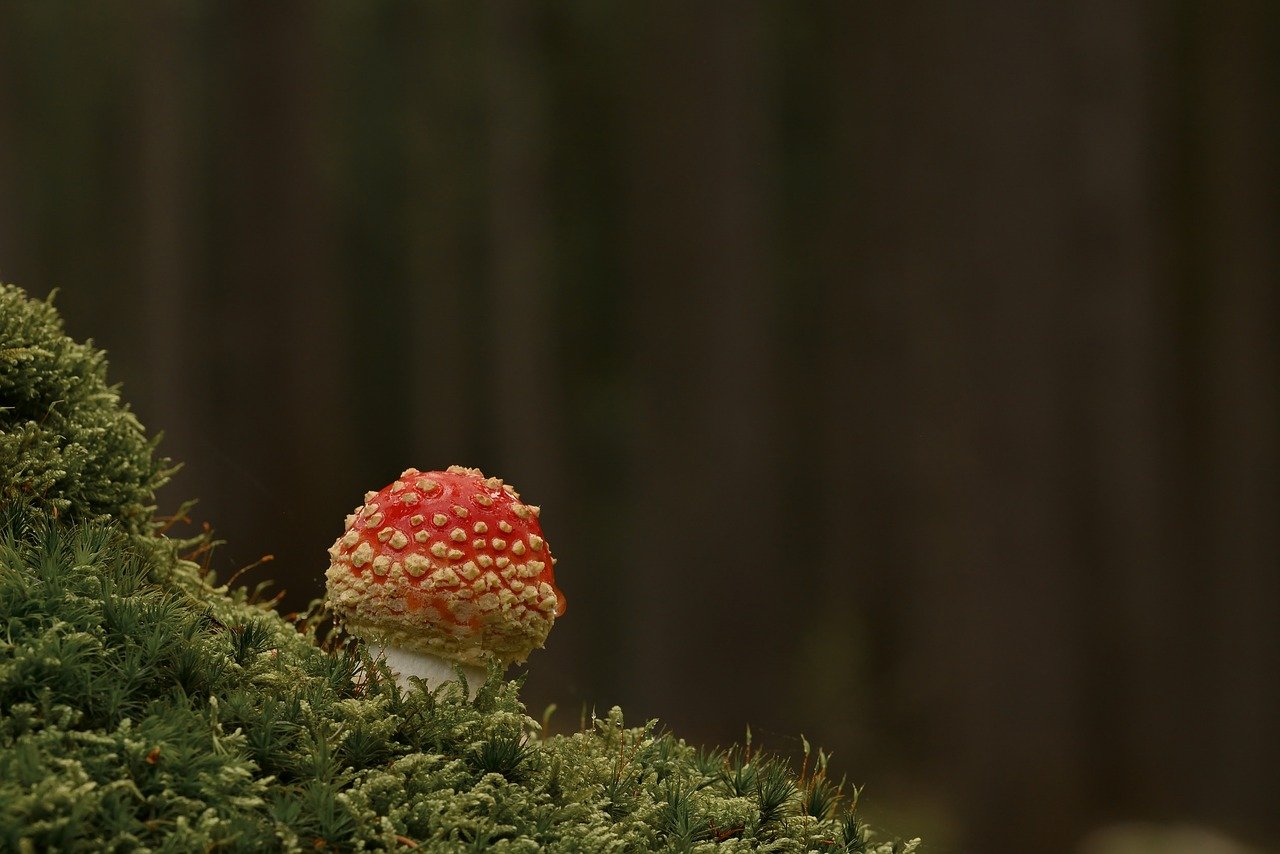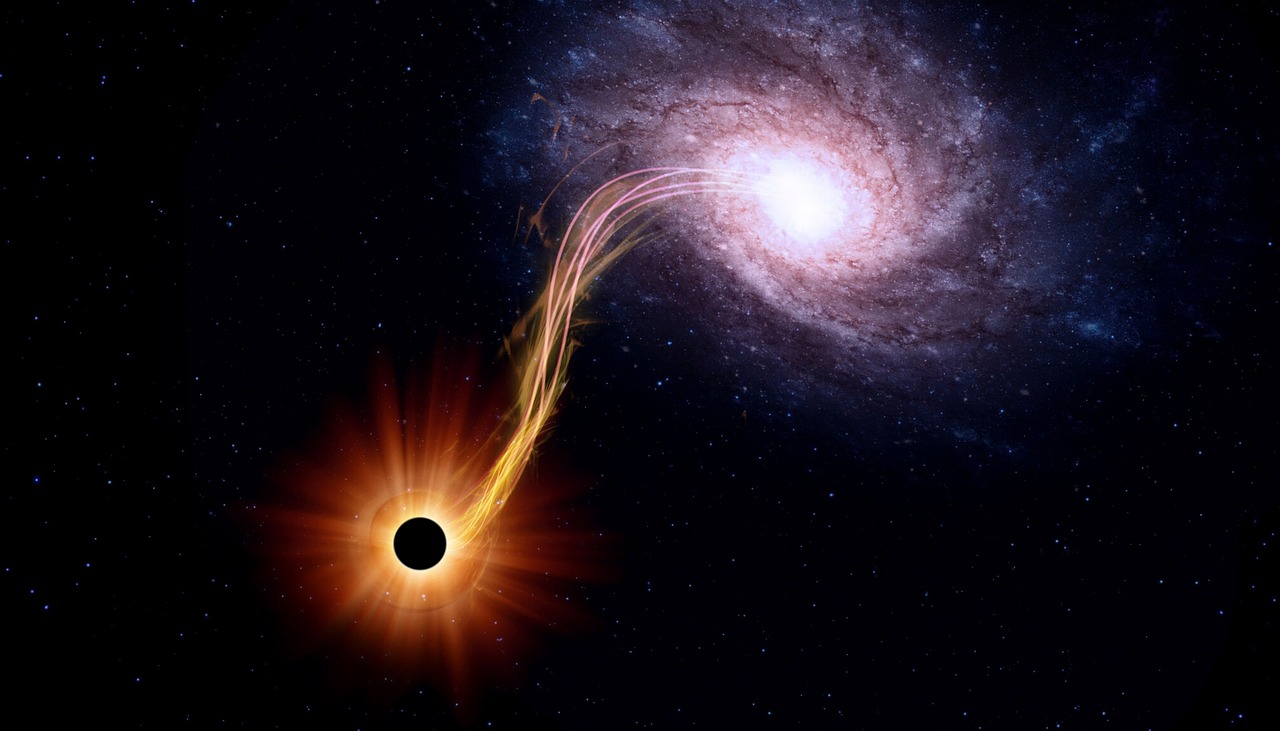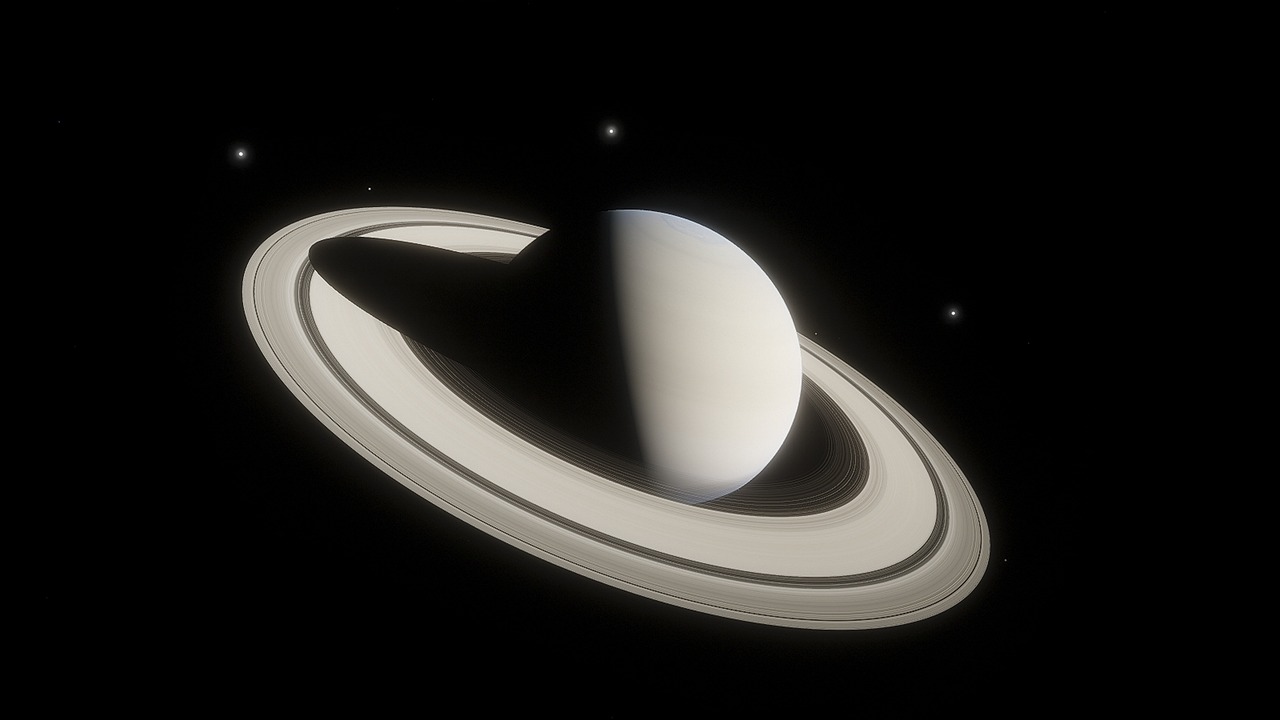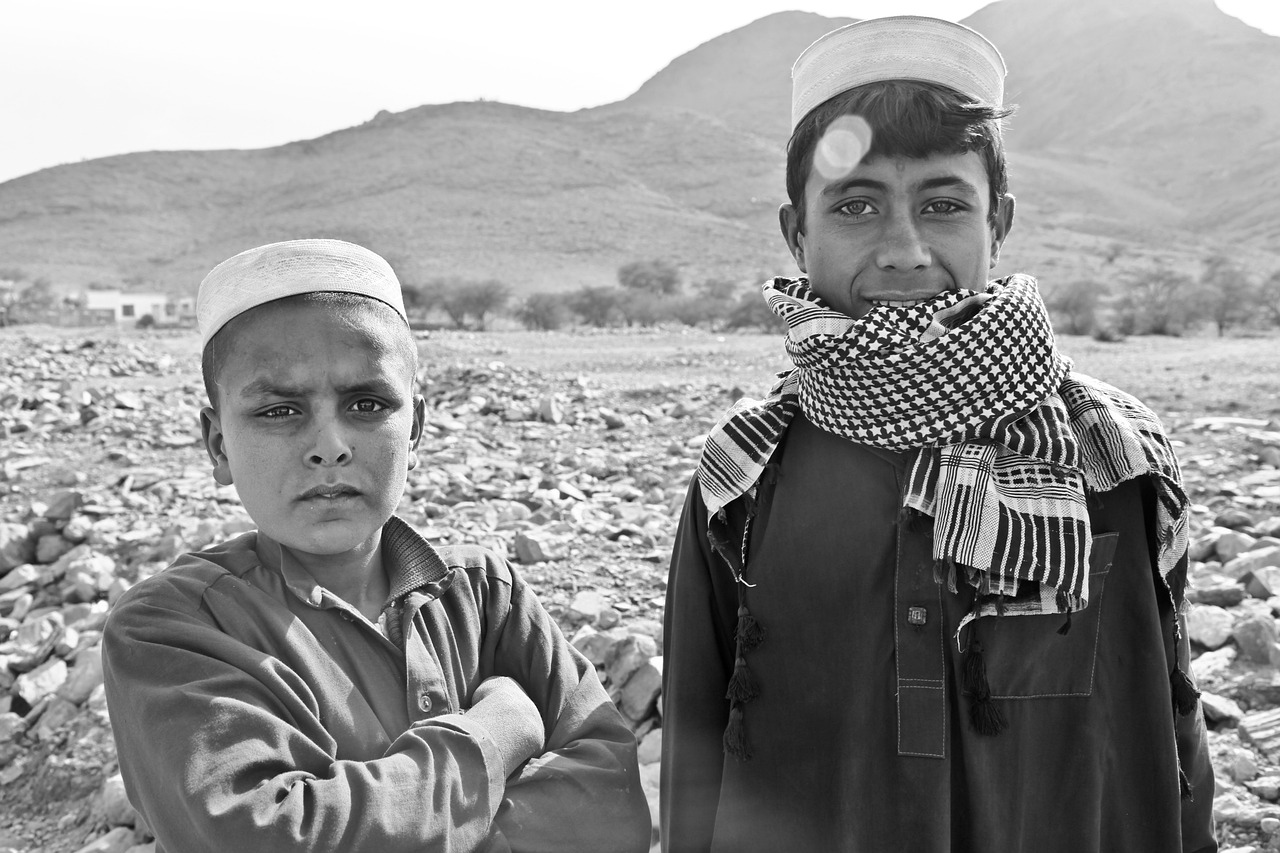Science Vs. Pseudoscience - A Philosophical Examination
In a world overflowing with information, the distinction between science and pseudoscience has never been more crucial. As we navigate through various claims and theories, the ability to discern what is credible from what is not can significantly influence our understanding of the universe and our place within it. This article aims to delve deep into the philosophical underpinnings, methodologies, and societal implications of both science and pseudoscience. By examining these themes, we will highlight the importance of critical thinking in evaluating the information that bombards us daily.
At its core, science is grounded in empirical evidence, testability, and reproducibility. These principles form the bedrock of scientific inquiry, enabling researchers to build upon established knowledge systematically. The scientific method serves as a rigorous framework that guides this process, ensuring that hypotheses can be tested and validated through observation and experimentation. For example, when a scientist develops a theory, they must design experiments that can either support or refute their claims. This iterative process not only advances our understanding but also fosters a culture of skepticism and inquiry, allowing us to question and refine our knowledge continuously.
Pseudoscience, on the other hand, often masquerades as legitimate science but lacks the empirical support and rigorous methodology that characterizes true scientific inquiry. It thrives on the fringes of credibility, often appealing to emotions rather than logic. The danger of pseudoscience lies in its potential to mislead the public and undermine scientific literacy. When individuals accept pseudoscientific claims without question, they may make decisions that could adversely affect their health and well-being. For instance, believing in unproven medical treatments can lead to neglecting effective therapies, ultimately putting lives at risk.
Recognizing pseudoscience is vital for protecting ourselves from its misleading claims. Here are some common characteristics:
- Reliance on anecdotal evidence: Pseudoscientific claims often depend on personal stories rather than rigorous data.
- Lack of peer review: Unlike scientific research, pseudoscience typically bypasses the peer review process, which is essential for validating findings.
- Vague language: Pseudoscience often uses ambiguous terms that can obscure the truth and mislead individuals.
Some popular examples of pseudoscientific beliefs include astrology and homeopathy. These practices gain traction despite their lack of scientific validation, often due to their emotional appeal and the comfort they provide to individuals seeking answers. The societal impact of these beliefs can be profound, influencing public health policies and personal choices in ways that can hinder scientific progress.
Understanding the psychological factors that contribute to the acceptance of pseudoscience is equally important. Cognitive biases, such as the confirmation bias, can lead individuals to favor information that aligns with their pre-existing beliefs, often disregarding evidence that contradicts them. This tendency to cling to comforting beliefs over scientific evidence can significantly impact decision-making processes, resulting in choices that are not grounded in reality.
The philosophical inquiry into the nature of knowledge and belief sheds light on the science-pseudoscience dichotomy. Various philosophical frameworks can help clarify the boundaries between credible science and unfounded claims. For instance, the principle of falsifiability, proposed by philosopher Karl Popper, suggests that for a theory to be considered scientific, it must be testable and potentially disprovable. This criterion is a powerful tool for distinguishing between legitimate scientific theories and pseudoscientific claims that cannot withstand scrutiny.
Critical thinking is essential for evaluating claims and discerning credible information. In an age where misinformation can spread like wildfire, developing the skills necessary to differentiate between science and pseudoscience is more important than ever. By fostering a culture of critical inquiry, we empower individuals to question sources, analyze arguments, and recognize logical fallacies. These skills are crucial for navigating today’s information-rich environment, enabling us to make informed decisions that reflect a deeper understanding of the world around us.
Enhancing critical thinking skills involves practical strategies, such as:
- Questioning the credibility of sources
- Analyzing arguments for logical consistency
- Recognizing common logical fallacies
By applying these strategies, individuals can cultivate a more discerning approach to the information they encounter, ultimately promoting a more scientifically literate society.
The societal implications of distinguishing science from pseudoscience are profound. Informed citizens can contribute to better decision-making in various areas, including public health, education, and policy. When individuals are equipped with the tools to critically evaluate claims, they are more likely to advocate for evidence-based practices that benefit society as a whole. This collective effort fosters a more scientifically literate community, ultimately leading to a healthier, more informed population.
Q: What is the main difference between science and pseudoscience?
A: The main difference lies in the methodology; science relies on empirical evidence and rigorous testing, while pseudoscience often lacks these foundations.
Q: Can pseudoscience ever be beneficial?
A: While pseudoscience can provide comfort or a sense of community, it can also lead to harmful decisions, particularly regarding health and well-being.
Q: How can I improve my critical thinking skills?
A: You can enhance your critical thinking skills by questioning sources, analyzing arguments, and being aware of cognitive biases.

The Nature of Science
Science is not just a collection of facts; it is a dynamic process that seeks to understand the natural world through empirical evidence and rigorous testing. At its core, science is defined by a systematic approach to inquiry, which relies heavily on the scientific method. This method involves making observations, formulating hypotheses, conducting experiments, and drawing conclusions based on the data collected. The beauty of science lies in its self-correcting nature; as new evidence emerges, scientific theories can be revised or discarded, ensuring that our understanding of the universe continually evolves.
One of the fundamental principles that differentiate science from other forms of knowledge is testability. A scientific claim must be testable through observation and experimentation. If a hypothesis cannot be tested or if it cannot be proven wrong, it falls outside the realm of science. This characteristic is crucial because it allows scientists to validate their findings and share their results with the global community. The reproducibility of results is another cornerstone of scientific inquiry. If an experiment can be repeated with consistent results, it lends credibility to the original findings and contributes to the body of scientific knowledge.
Moreover, science is built on a foundation of peer review. Before a scientific study is published, it undergoes scrutiny by other experts in the field. This process ensures that the research is sound, the methodology is appropriate, and the conclusions drawn are justified. Peer review acts as a quality control mechanism, helping to filter out flawed studies and prevent misinformation from spreading. In this way, science fosters a culture of skepticism and inquiry, encouraging scientists to question their own assumptions and those of their peers.
In contrast to science, other forms of knowledge, such as anecdotal evidence or personal beliefs, lack these rigorous standards. For example, consider the difference between a scientific study on the effectiveness of a new drug and a friend's story about how that drug helped them. While the friend's experience may be compelling, it does not provide the same level of evidence as a well-designed clinical trial. This distinction is vital, as it highlights the importance of relying on scientifically validated information when making decisions that affect our lives and society.
In summary, the nature of science is characterized by its commitment to evidence-based inquiry, reproducibility of results, and a rigorous peer review process. These elements work together to create a reliable framework for understanding the world around us. As we navigate an increasingly complex information landscape, recognizing the nature of science becomes essential in distinguishing credible knowledge from unfounded claims. By embracing the principles of scientific inquiry, we can foster a more informed society that values critical thinking and evidence-based decision-making.

Understanding Pseudoscience
Pseudoscience often presents itself as a credible alternative to genuine scientific inquiry, but it fundamentally lacks the rigorous framework that defines true science. At first glance, pseudoscientific claims can appear convincing, often employing scientific jargon to give an illusion of legitimacy. However, a closer examination reveals a lack of empirical support and a failure to adhere to the scientific method. This section delves into the nuances of pseudoscience, highlighting its characteristics and the potential dangers it poses to society.
One of the most alarming aspects of pseudoscience is its ability to mislead the public. When individuals are presented with claims that sound plausible but are devoid of scientific backing, they may unknowingly adopt beliefs that can affect their health and well-being. For instance, many people turn to alternative medicine practices that lack rigorous testing, often at the expense of effective medical treatments. This phenomenon underscores the critical need for discerning credible information in our increasingly complex world.
To further understand the nature of pseudoscience, it’s essential to recognize its common characteristics. Pseudoscientific claims often exhibit:
- Reliance on Anecdotal Evidence: Unlike science, which demands systematic data collection and analysis, pseudoscience frequently leans on personal stories and testimonials that lack rigorous validation.
- Lack of Peer Review: Scientific findings are subjected to peer review, a process that ensures scrutiny and validation by other experts in the field. In contrast, pseudoscience often bypasses this critical step, allowing unverified claims to proliferate.
- Use of Vague Language: Pseudoscientific literature often employs ambiguous terms that can confuse or mislead the audience, making it difficult to assess the validity of the claims being made.
These characteristics not only obscure the truth but can also lead individuals down a path of misinformation. For example, consider the realm of alternative therapies. Treatments such as homeopathy and astrology have gained traction despite their lack of scientific validation. Homeopathy, which posits that diluted substances can cure ailments, fails to demonstrate efficacy through controlled studies. Similarly, astrology claims to predict personal traits and life events based on celestial positions, yet it remains unfounded in scientific evidence.
The impact of pseudoscience extends beyond individual beliefs; it can shape public health policies and societal norms. When large segments of the population embrace pseudoscientific ideas, such as vaccine misinformation or climate change denial, the consequences can be dire. These beliefs can lead to poor health decisions, resistance to scientifically-backed interventions, and a general erosion of trust in legitimate scientific institutions.
In summary, understanding pseudoscience is crucial for promoting scientific literacy and critical thinking. By recognizing the characteristics and dangers of pseudoscientific claims, individuals can better navigate the complex landscape of information available to them. The importance of fostering a society that values empirical evidence and rigorous inquiry cannot be overstated, as it directly influences our collective ability to make informed decisions that affect our health, environment, and future.
Q: What is the main difference between science and pseudoscience?
A: The primary difference lies in methodology. Science relies on empirical evidence, rigorous testing, and peer review, while pseudoscience lacks these foundational elements and often relies on anecdotal evidence.
Q: How can I identify pseudoscientific claims?
A: Look for vague language, lack of peer-reviewed research, and reliance on testimonials rather than systematic evidence. If a claim seems too good to be true, it likely is.
Q: Why is it important to differentiate between science and pseudoscience?
A: Distinguishing between the two is essential for making informed decisions about health, safety, and policy. Embracing pseudoscience can lead to harmful consequences for individuals and society as a whole.

Characteristics of Pseudoscience
Pseudoscience often presents itself as a legitimate field of study, but it is crucial to recognize the key characteristics that set it apart from true scientific inquiry. One of the most telling signs of pseudoscience is its reliance on anecdotal evidence. Unlike science, which demands rigorous testing and empirical data, pseudoscientific claims frequently draw on personal stories and testimonials. For instance, someone might claim that a particular herbal remedy cured their illness, but such a statement lacks the systematic investigation needed to establish its efficacy.
Another significant characteristic is the absence of peer review. In the scientific community, research undergoes scrutiny by experts in the field before it is published. This process ensures that findings are reliable and valid. In contrast, pseudoscientific claims often bypass this essential step, leading to the spread of unverified information. Without peer review, there is no safeguard against errors or biases that could mislead the public.
The language used in pseudoscience is often vague and ambiguous, which serves to obscure the truth. Pseudoscientific claims may use jargon that sounds impressive but lacks clear definitions. For example, terms like "energy fields" or "quantum healing" can sound scientific but are often devoid of concrete meaning. This deliberate obfuscation can confuse individuals and make it difficult for them to critically evaluate the claims being presented.
Additionally, pseudoscientific practices often exhibit a tendency to cherry-pick data. This means that proponents will selectively present information that supports their claims while ignoring evidence that contradicts them. Such selective reporting creates a distorted view of reality, leading people to believe in the validity of pseudoscience without considering the full picture.
Moreover, pseudoscience tends to resist falsification. In true scientific inquiry, a hypothesis must be testable and falsifiable; that is, it should be possible to prove it wrong through experimentation. However, pseudoscientific claims often evade this requirement by being formulated in such a way that they cannot be tested or disproven. This lack of testability is a major red flag that should alert individuals to the potential flaws in pseudoscientific arguments.
To summarize, the characteristics of pseudoscience can be encapsulated in the following points:
- Anecdotal Evidence: Reliance on personal testimonies rather than empirical data.
- Lack of Peer Review: Absence of rigorous scrutiny by experts in the field.
- Vague Language: Use of ambiguous terms that obscure meaning.
- Cherry-Picking Data: Selective reporting of information to support claims.
- Resistance to Falsification: Claims that cannot be tested or disproven.
Recognizing these characteristics is essential for individuals striving to differentiate between legitimate science and pseudoscience. By honing our critical thinking skills and scrutinizing claims carefully, we can better navigate the complex landscape of information that surrounds us today.
Q1: How can I tell if a claim is pseudoscientific?
A1: Look for reliance on anecdotal evidence, lack of peer review, vague language, and resistance to falsification. If a claim cannot be tested or disproven, it's a red flag.
Q2: Why do people believe in pseudoscience?
A2: Cognitive biases, such as the desire for comforting beliefs, can lead individuals to favor pseudoscientific claims over scientific evidence.
Q3: What are some common examples of pseudoscience?
A3: Astrology, homeopathy, and certain alternative medicine practices are often cited as examples of pseudoscience due to their lack of empirical support.
Q4: How can I improve my critical thinking skills?
A4: Practice questioning sources, analyzing arguments, and recognizing logical fallacies to enhance your ability to evaluate claims critically.

Common Examples
When we think about pseudoscience, it’s essential to recognize that many beliefs and practices masquerade as legitimate scientific endeavors, even though they lack the rigorous foundation that true science demands. Two of the most well-known examples are astrology and homeopathy. These practices have gained significant popularity over the years, often drawing in individuals who are seeking answers or solutions to their problems. But what exactly makes these practices pseudoscientific?
Astrology, for instance, claims to predict human behavior and future events based on the positions of celestial bodies. While it might seem intriguing to check your horoscope for a glimpse into your future, the fundamental flaw lies in the absence of empirical evidence. Studies have shown that astrological predictions do not hold up under scientific scrutiny. For example, a study conducted by the National Science Foundation found no correlation between astrological signs and personality traits. Yet, despite this lack of validation, astrology continues to thrive, illustrating how a comforting narrative can easily overshadow scientific facts.
On the other hand, homeopathy presents itself as a natural remedy that treats ailments with highly diluted substances. Advocates often claim that these remedies can heal everything from allergies to chronic diseases. However, numerous scientific reviews, including those published in reputable journals like The Lancet, have concluded that homeopathic treatments perform no better than a placebo. Yet, the allure of a natural solution keeps many individuals invested in these practices, often at the expense of effective medical treatment.
These examples highlight a broader issue: the societal impact of pseudoscience can be profound. When individuals turn to astrology or homeopathy instead of seeking evidence-based medical advice, they risk their health and well-being. This can lead to delays in receiving appropriate care and can even have fatal consequences in severe cases. As such, it’s crucial to foster a better understanding of science and its methodologies, so individuals can make informed choices rather than relying on pseudoscientific claims.
To further illustrate the contrast between these pseudoscientific practices and legitimate science, consider the following table:
| Pseudoscience | Science |
|---|---|
| Astrology: Based on celestial positions without empirical support. | Astrophysics: Studies celestial bodies using mathematical models and empirical data. |
| Homeopathy: Claims to treat illnesses with extreme dilutions lacking scientific backing. | Pharmacology: Develops medications based on rigorous testing and clinical trials. |
In conclusion, while pseudoscientific beliefs like astrology and homeopathy may provide comfort or a sense of control, it’s essential to approach them with a critical mindset. Understanding the differences between these practices and legitimate scientific approaches can empower individuals to make better decisions regarding their health and well-being.
- What is the main difference between science and pseudoscience? Science is based on empirical evidence and the scientific method, while pseudoscience lacks rigorous testing and validation.
- How can I identify pseudoscience? Look for claims that rely on anecdotal evidence, lack peer review, and use vague language to obscure their true nature.
- Are there any dangers of believing in pseudoscience? Yes, believing in pseudoscience can lead to poor decision-making regarding health and well-being, potentially resulting in harmful consequences.

Psychological Factors
When we delve into the realm of pseudoscience, we can't ignore the powerful role that psychological factors play in its acceptance and proliferation. It's fascinating how our minds are wired to seek comfort and certainty, often leading us to embrace beliefs that feel good, even if they lack scientific backing. This tendency can be likened to a moth drawn to a flame; we are irresistibly attracted to ideas that promise simple answers to complex questions.
One key psychological phenomenon at play is known as cognitive bias. This refers to the systematic ways in which our minds can deviate from rationality, leading us to make judgments that are not based on objective reality. For example, the confirmation bias is particularly relevant here. It describes our tendency to seek out information that confirms our pre-existing beliefs while ignoring evidence that contradicts them. Imagine a person who believes in astrology; they are more likely to remember instances when their horoscope was accurate while conveniently forgetting the times it was not. This selective memory reinforces their belief, creating a cycle that is hard to break.
Another psychological factor is the appeal to authority. Many individuals are inclined to trust figures of authority or popular personalities, believing that their expertise translates into truth. This is particularly evident in the realm of pseudoscience, where charismatic proponents can sway public opinion despite lacking rigorous scientific credentials. The allure of a well-spoken advocate can often overshadow the need for empirical evidence, leading people to accept pseudoscientific claims without question.
Additionally, the concept of cognitive dissonance plays a significant role in the acceptance of pseudoscience. When confronted with evidence that contradicts their beliefs, individuals may experience discomfort, prompting them to rationalize their positions rather than alter them. For instance, someone who has invested time and energy into a pseudoscientific practice may dismiss conflicting scientific evidence as flawed or biased, choosing instead to cling to their comforting beliefs.
Furthermore, social dynamics can amplify these psychological factors. Humans are inherently social beings, and our beliefs are often shaped by our communities. If a person is surrounded by friends or family who endorse pseudoscientific ideas, they may feel pressured to conform, even if they harbor doubts. This social reinforcement can create an echo chamber, where misinformation thrives and critical thinking is stifled.
In conclusion, the intersection of psychology and pseudoscience reveals a complex web of influences that can cloud judgment and hinder our ability to discern fact from fiction. Understanding these psychological factors is crucial for fostering a culture of critical thinking and scientific literacy. By recognizing our cognitive biases, questioning authority figures, and challenging social norms, we can begin to break free from the chains of pseudoscientific beliefs and embrace a more evidence-based worldview.
- What is the difference between science and pseudoscience?
Science is based on empirical evidence and the scientific method, while pseudoscience lacks rigorous methodology and often relies on anecdotal evidence. - How can I develop critical thinking skills?
Practice questioning sources, analyzing arguments, and recognizing logical fallacies to improve your ability to discern credible information. - Why do people believe in pseudoscience?
Psychological factors such as cognitive biases, the appeal to authority, and social dynamics often contribute to the acceptance of pseudoscientific beliefs. - What impact does pseudoscience have on society?
Pseudoscience can undermine public health, education, and policy by promoting misinformation and hindering scientific literacy.

Philosophical Perspectives
When we dive into the surrounding science and pseudoscience, we uncover a rich tapestry of thought that has evolved over centuries. Philosophy invites us to question the very foundations of knowledge and belief, pushing us to consider what it means to truly know something. This exploration is crucial in distinguishing between valid scientific claims and those that lack merit. At its core, philosophy challenges us to think critically about the nature of evidence, the reliability of our senses, and the frameworks we use to interpret the world around us.
One of the key philosophical frameworks that aids in this distinction is empiricism. Empiricists argue that knowledge comes primarily from sensory experience. In the context of science, this means that hypotheses must be tested through observation and experimentation. On the other hand, pseudoscience often relies on anecdotal evidence and personal testimonies, which lack the rigor of empirical validation. This fundamental difference raises an important question: how do we determine what constitutes credible evidence?
Furthermore, the philosophy of falsifiability, introduced by Karl Popper, plays a pivotal role in understanding scientific inquiry. According to Popper, for a theory to be considered scientific, it must be falsifiable—meaning it can be tested and potentially disproven. Pseudoscientific claims, however, often evade this criterion, as they tend to be vague or unfalsifiable, making it difficult, if not impossible, to test their validity. This leads us to ponder the implications of accepting beliefs that cannot withstand scrutiny.
Additionally, the concept of scientific realism versus anti-realism adds another layer to our understanding. Scientific realists maintain that the world described by science is the actual world, while anti-realists argue that scientific theories are merely useful instruments for predicting phenomena. This debate influences how we view scientific knowledge and its relation to reality, further complicating our ability to discern between science and pseudoscience. Are we merely using science as a tool, or does it reflect a deeper truth about our universe?
Ultimately, the philosophical inquiry into science and pseudoscience compels us to engage with fundamental questions about knowledge, belief, and the nature of reality. It encourages us to adopt a skeptical mindset, one that values evidence and rigorous testing over comforting narratives. By fostering a philosophical approach to understanding these distinctions, we empower ourselves to navigate the complexities of information in our modern world.
- What is the difference between science and pseudoscience?
Science is based on empirical evidence and the scientific method, whereas pseudoscience lacks rigorous testing and validation. - Why is critical thinking important?
Critical thinking helps individuals evaluate claims and discern credible information, which is essential in an age of information overload. - How can I develop critical thinking skills?
Practicing questioning sources, analyzing arguments, and recognizing logical fallacies can enhance your critical thinking abilities. - What role does philosophy play in understanding science?
Philosophy provides frameworks for questioning knowledge and belief, helping to clarify the boundaries between credible science and pseudoscience.

The Role of Critical Thinking
In an age where information is just a click away, the ability to engage in critical thinking has never been more vital. Critical thinking is not merely a skill; it’s a necessary tool that empowers individuals to sift through the overwhelming noise of information and discern what is credible from what is not. Imagine standing in a bustling marketplace filled with vendors shouting about their wares—how do you choose the best product? The same principle applies when navigating the vast sea of information available today. Critical thinking enables us to analyze, evaluate, and synthesize information effectively.
At its core, critical thinking involves a set of cognitive skills that help us assess claims, arguments, and evidence. It encourages a questioning attitude, prompting us to ask, “Is this true?” or “What evidence supports this claim?” This process is crucial, especially when faced with pseudoscientific assertions that may appear convincing at first glance. For instance, when someone claims that a miracle cure can solve all health issues, critical thinking urges us to probe deeper—what does scientific research say? Are there reputable studies that back this up? Without these probing questions, we risk falling prey to misleading information.
Moreover, critical thinking is not just about skepticism; it’s also about being open-minded. It requires us to consider multiple perspectives and weigh the evidence without bias. This balance of skepticism and open-mindedness is essential for fostering a well-rounded understanding of complex issues. In a world rife with misinformation, developing the ability to critically evaluate sources is paramount. Here are a few strategies to cultivate these skills:
- Question Sources: Always consider the origin of the information. Who is providing it? What are their credentials?
- Analyze Arguments: Look for logical consistency in the arguments presented. Are there any fallacies?
- Recognize Bias: Be aware of your own biases and how they might affect your interpretation of information.
In addition to these strategies, fostering an environment that encourages critical dialogue is essential. Engaging in discussions with others, especially those who hold differing viewpoints, can provide invaluable insights and challenge our assumptions. This process not only sharpens our critical thinking abilities but also promotes a culture of inquiry and understanding.
The impact of critical thinking extends beyond individual decision-making—it influences society as a whole. When citizens are equipped with critical thinking skills, they can engage more meaningfully in public discourse, make informed choices in health and education, and advocate for policies grounded in scientific evidence. A society that values critical thinking is one that prioritizes knowledge, understanding, and progress.
In conclusion, the role of critical thinking in distinguishing science from pseudoscience is indispensable. As we navigate an increasingly complex world, honing our critical thinking skills not only enriches our personal lives but also contributes to a more informed and scientifically literate society.
- What is critical thinking?
Critical thinking is the ability to analyze information objectively and evaluate it based on evidence, logic, and reasoning. - Why is critical thinking important?
It helps individuals make informed decisions, discern credible information from misinformation, and engage in meaningful discussions. - How can I improve my critical thinking skills?
You can improve critical thinking by questioning assumptions, analyzing arguments, recognizing biases, and engaging in discussions with diverse perspectives.

Developing Critical Thinking Skills
In a world overflowing with information, the ability to think critically is more vital than ever. Critical thinking is not just about being skeptical; it's about actively engaging with the information presented to us. So, how can we develop these crucial skills? First, we need to cultivate a mindset that questions everything. This means not taking information at face value, but rather probing deeper. Ask yourself: Who is providing this information? What evidence supports their claims? Are there alternative viewpoints?
One effective way to enhance critical thinking is through the practice of analyzing arguments. When confronted with a claim, break it down into its core components. Identify the premises and the conclusion. Are the premises strong enough to support the conclusion? This method not only helps clarify the argument but also reveals any logical fallacies that may be present. For example, consider the following argument:
| Premise | Conclusion |
|---|---|
| All humans are mortal. | Socrates is a human. |
| Therefore, Socrates is mortal. |
In this case, the premises logically lead to the conclusion. However, if we were to encounter an argument like, "Everyone who uses social media is unhappy because I know someone who is," we can see that the reasoning is weak and based on anecdotal evidence. Recognizing these distinctions is key to developing our critical thinking.
Moreover, it’s essential to recognize our own biases. Cognitive biases can cloud our judgment and lead us to accept pseudoscientific claims simply because they align with our existing beliefs. By being aware of these biases, we can work to counteract them. For instance, the confirmation bias leads individuals to seek information that supports their pre-existing views while dismissing contradictory evidence. To combat this, actively seek out diverse perspectives and be open to changing your mind when presented with compelling evidence.
Another strategy involves engaging in discussions and debates. When we articulate our thoughts and defend our viewpoints, we sharpen our reasoning skills. This process encourages us to think on our feet and consider counterarguments. Participating in a debate club or simply discussing current events with friends can be a fun and effective way to practice critical thinking in real-time.
Lastly, reading widely and diversely is a powerful tool for developing critical thinking skills. Exposure to various disciplines, cultures, and philosophies broadens our understanding and challenges our viewpoints. It’s like adding different colors to a palette; the more colors you have, the richer your understanding becomes. So, pick up a book on philosophy, dive into a science journal, or explore literature from different cultures. Each new piece of information adds depth to your critical thinking abilities.
In conclusion, developing critical thinking skills is a journey that requires practice and dedication. By questioning information, analyzing arguments, recognizing biases, engaging in discussions, and reading widely, we can become more discerning consumers of information. In a society where misinformation can spread like wildfire, these skills are not just beneficial; they are essential for navigating the complexities of modern life.
- What is critical thinking? Critical thinking is the ability to analyze information objectively and evaluate it for validity and relevance.
- How can I improve my critical thinking skills? You can improve your critical thinking by questioning information, analyzing arguments, recognizing biases, engaging in discussions, and reading diversely.
- Why is critical thinking important? Critical thinking is crucial for making informed decisions, understanding complex issues, and distinguishing between credible information and pseudoscience.
- Can critical thinking skills be taught? Yes, critical thinking skills can be developed through practice and education, making it essential in both academic and real-world settings.

Impact on Society
The distinction between science and pseudoscience has profound implications for society that cannot be overstated. When individuals are equipped with the ability to discern credible scientific information from misleading pseudoscientific claims, they contribute to a more informed public discourse. This, in turn, fosters better decision-making in various sectors, including public health, education, and policy-making. Imagine a society where people can critically evaluate the information presented to them, leading to healthier lifestyles, informed voting decisions, and a more scientifically literate populace. The ripple effects of this critical thinking extend far beyond individual choices; they shape the very fabric of our communities.
For instance, consider the impact on public health. When citizens understand the scientific method and can differentiate between effective medical treatments and pseudoscientific alternatives, they are less likely to fall prey to scams that promise miraculous cures without evidence. This understanding can lead to:
- Increased Vaccination Rates: An informed public is more likely to trust vaccines that are backed by rigorous scientific research.
- Better Health Choices: Individuals can make healthier lifestyle choices based on credible information rather than anecdotal evidence.
- Stronger Public Policy: Policymakers who rely on scientific evidence can create laws and regulations that genuinely protect public health.
Moreover, the educational sector benefits significantly from a society that values scientific literacy. When students are taught to think critically and question the validity of claims, they develop a mindset that seeks evidence rather than accepting information at face value. This not only enhances their academic performance but also prepares them for active participation in a democratic society. In a world inundated with information, the ability to sift through the noise and find the truth is invaluable.
Furthermore, the implications extend to environmental policy as well. As the world grapples with climate change and sustainability challenges, a scientifically literate population is crucial for supporting policies that are based on evidence rather than fear or misinformation. Citizens who understand the science behind climate change are more likely to advocate for effective solutions, hold their leaders accountable, and engage in sustainable practices. In this way, the impact of distinguishing science from pseudoscience becomes a matter of global significance.
In summary, the ability to differentiate between credible science and pseudoscience is not merely an academic exercise; it is a vital skill that empowers individuals and communities. By fostering critical thinking, we can cultivate a society that values evidence-based decision-making, ultimately leading to a healthier, more informed, and more resilient world.
- What is the difference between science and pseudoscience? Science relies on empirical evidence and the scientific method, while pseudoscience lacks rigorous testing and validation.
- Why is critical thinking important? Critical thinking helps individuals evaluate claims and make informed decisions, reducing the likelihood of being misled by pseudoscience.
- How can I improve my critical thinking skills? You can enhance your critical thinking by questioning sources, analyzing arguments, and recognizing logical fallacies.
- What are some common examples of pseudoscience? Examples include astrology, homeopathy, and various conspiracy theories that lack scientific backing.
Frequently Asked Questions
- What is the main difference between science and pseudoscience?
The main difference lies in the methods used to acquire knowledge. Science relies on empirical evidence, testability, and reproducibility, whereas pseudoscience often lacks these rigorous methodologies, making claims that cannot be tested or validated.
- Can you give examples of pseudoscience?
Sure! Common examples of pseudoscience include astrology, which claims to predict personality traits and future events based on celestial positions, and homeopathy, which suggests that highly diluted substances can cure ailments without scientific backing.
- Why do people believe in pseudoscience?
People may be drawn to pseudoscience due to cognitive biases that favor comforting beliefs over scientific evidence. Psychological factors, such as the desire for certainty and the appeal of simple explanations, can significantly influence acceptance of these claims.
- How can I improve my critical thinking skills?
Improving your critical thinking skills involves practicing questioning sources, analyzing arguments, and recognizing logical fallacies. Engaging with diverse viewpoints and actively seeking out reliable information can also enhance your ability to discern credible claims.
- What are the societal implications of distinguishing science from pseudoscience?
Distinguishing between science and pseudoscience has profound implications for society, as informed citizens are better equipped to make decisions in areas like public health and education. This discernment fosters a more scientifically literate society, ultimately leading to improved policies and outcomes.



















